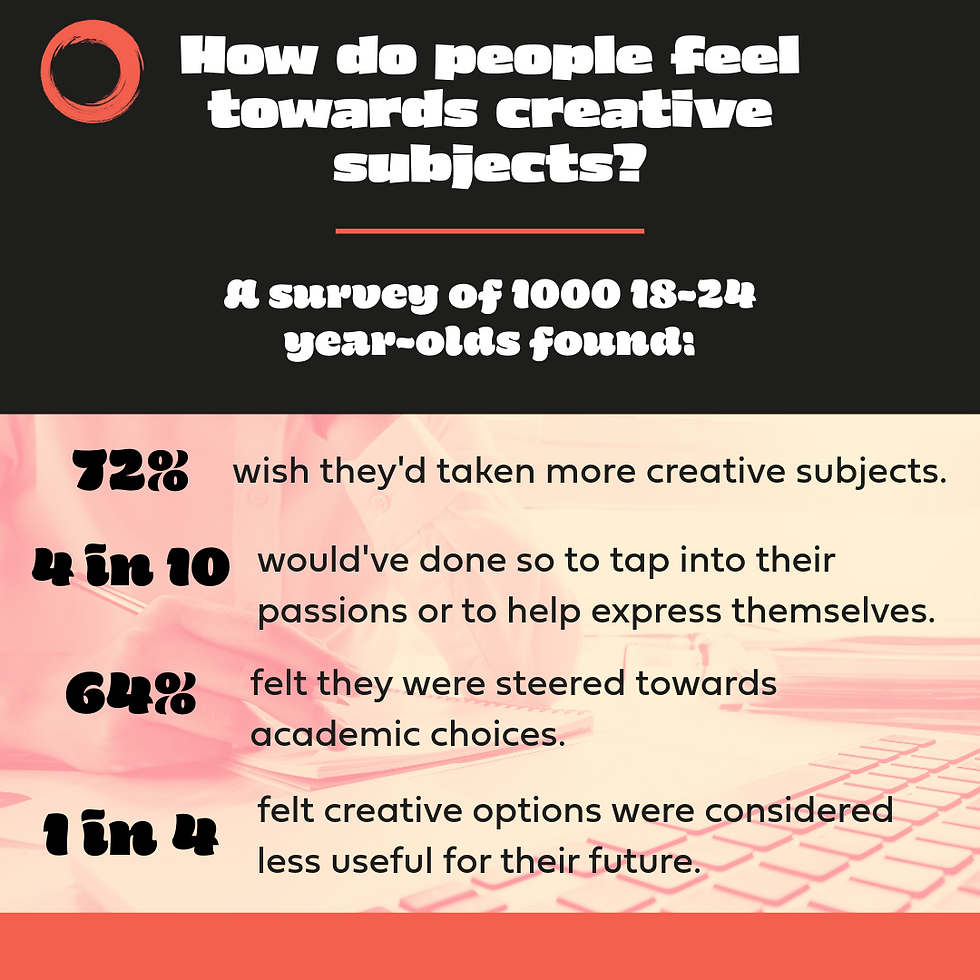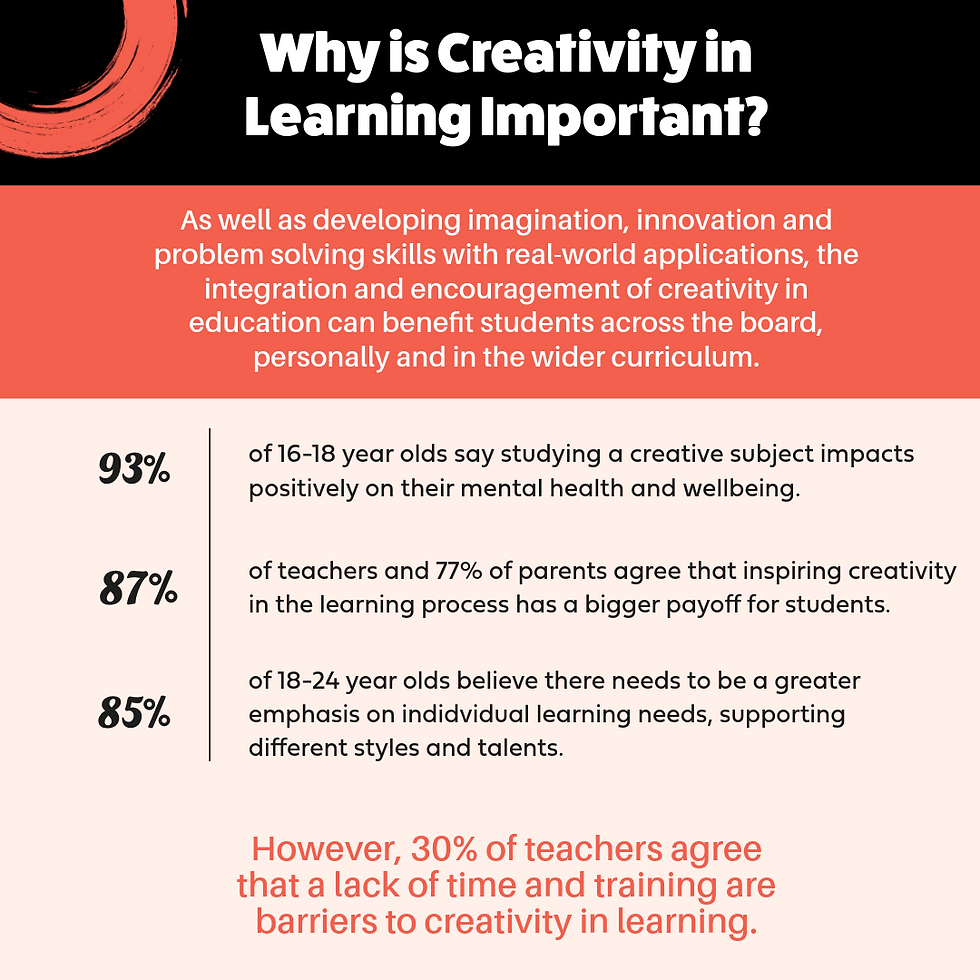Creativity in Education - A2G's Research Findings
- A2G

- May 30, 2024
- 3 min read
This post is a summary of A2G's findings from research into attitudes towards creativity primarily in education, and touching on its wider importance in individuals and in life. We start with infographics and existing data, followed by the results of A2G's own audience survey.

There is a large number of young people that regret or have second thoughts about having not chosen more creative routes in their education, evidencing the importance of offering young people exposure and encouragement in pursuing creative subjects. Reasonings generally centre around ideas of following passion, gaining confidence and obtaining a more interesting career. It becomes clear that creative or artistic subjects were painted as the “easy route”, and many people made more academic choices believing it would benefit their future, to get into better universities and to please their parents or guardians.

A majority of teachers and parents agree on the benefit of creativity for students, but it is suggested that the resources are lacking. Students say that a focus on different learning styles and needs is required, which space for creativity can encompass.

The continued growth of the creative industries alone is enough to prove the importance of encouraging participation in creative subjects, especially at a higher eduction level considering the percentage of the creative workforce that hold degrees or equivalent qualifications is almost three-quarters.

Creativity in learning should develop problem-solving skills that are applicable to the real world. The majority of teachers view the use of transformative technology as best in building those connections and applications. Most students say they are using technology in their learning regularly, but few appear to recognise the potential for real-world application in what they are learning.
The figures above provide an clear representation of those participating in creative subjects.
It is evident that white people represent the vast majority of students applying for and accepting study of creative subjects, mostly female and from middle-class backgrounds, although this is a less severe class imbalance than other subjects.
Although the data is relative to the UK population (majority white, so we would expect the majority of applicants to be so too), the application, offer and acceptance rates are still lower for minority groups than in other subjects.
A2G's Survey
A2G's survey was targeted at young people studying at a higher education or sixth form level. Responses from students would give us an indication of how the audience actually feels towards the topic of creativity and how they view creative practice in relation to their education.
Survey respondents were an even 50/50 split of male and female. 80% fell in the 16-24 age group.
60% of students considered themselves to be creative, including most
16-24 year olds.
“Creative” was mostly defined in terms of aesthetic and design, unconventional and unique thinking, expression, imagination and innovation.
90% of students felt that creativity was either very or somewhat important in learning.
Females were less likely to view creativity as important in learning.
Only 35% of students felt there was “lots of opportunity” to be creative in their current subject of study.
50% of students say they have felt pressure to take more traditional academic routes. Most of these respondents were 16-24 year olds, of both genders.
These pressures were most likely to be felt to come from society (78.9%) and employers (47.4%).
Feelings as to how creativity could be more involved in learning included group activities and collaboration, less confinement and restriction to allow for greater fluidity and own inspirations to be drawn from, more hands-on projects, and allowing for mistakes and space for imagination in problem solving.
A2G also wrote a short literature review as part of the research into creativity in education. You can find the easy-to-read, more accessible version on our blog here: https://a2gcreativity.wixsite.com/a2gcreativity/post/the-academics-on-creativity-in-education










Comments